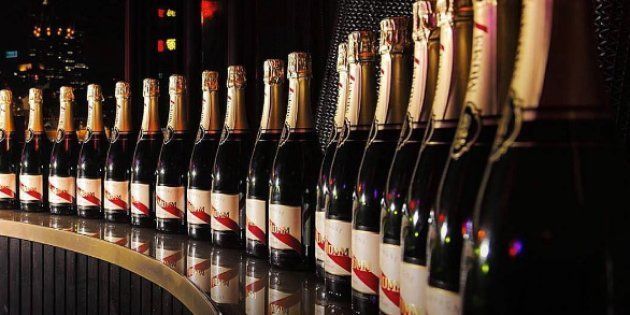
Cape Town's biggest racing event has a new name and, as always, the Sun Met celebrated with Mumm Champagne will be bringing the South Africa's finest together for a day at the races. The only way to celebrate the day this year is with a glass or two of bubbly in hand and new sponsors GH Mumm will be keeping guests feeling festive.
The champagne has become synonymous with the art of sabrage — slicing open a champagne bottle with a cavalry sword — that has its roots in the Napoleonic era. While you may not always have a cavalry sword handy, it is one of champagne's finest traditions used to mark special occasions, or simply for after dinner drinks if you are staying at The Saint Regis Hotel in Bangkok.
"The ritual of sabrage has always been part of our House history and we will continue to embrace its legacy," says GH Mumm brand ambassador Sixtine De Laleu.
Enjoying a bottle of bubbly is always a mark of celebration and, while the bubblies are usually all called champagne, not all sparkles are created equal. Champagne refers only to the beverage produced with grapes grown in the Champagne region of France. Sparkling wine is wine with carbon dioxide added to it, and a Méthode Cap Classique (MCC) is unique to South Africa and refers to a "champagne" made in South Africa but using the traditional French methods. According to De Laleu, it is the qualities of the champagne that make it ideal for sabrage.
"With the champagne-making process, a natural second fermentation occurs, happening within the bottle to capture the sparkle of the wines. This fermentation is responsible for the pressure accumulation within a bottle of champagne, called effervescence. This specific effervescence as well as the particularly strong glass makes the sabrage experience with a champagne bottle the easiest and the cleanest." The glass used by Mumm is thicker than with other champagnes and, according to De Laleu, this enables it to hold the extra pressure from the effervescence.
De Laleu explains how to sabrage a bottle of champagne in the traditional way: "Position the blade of the sabre at the base of the bottle neck. Slowly slide the blade down the seam of the bottle and, as you slide it up again, strike the visible protrusion on the neck with an audible sound. You will, almost magically, sever the top inch of the bottle in one piece, leaving behind an astonishingly clean cut and slight surge of champagne as the pressure is released."
Voila!
